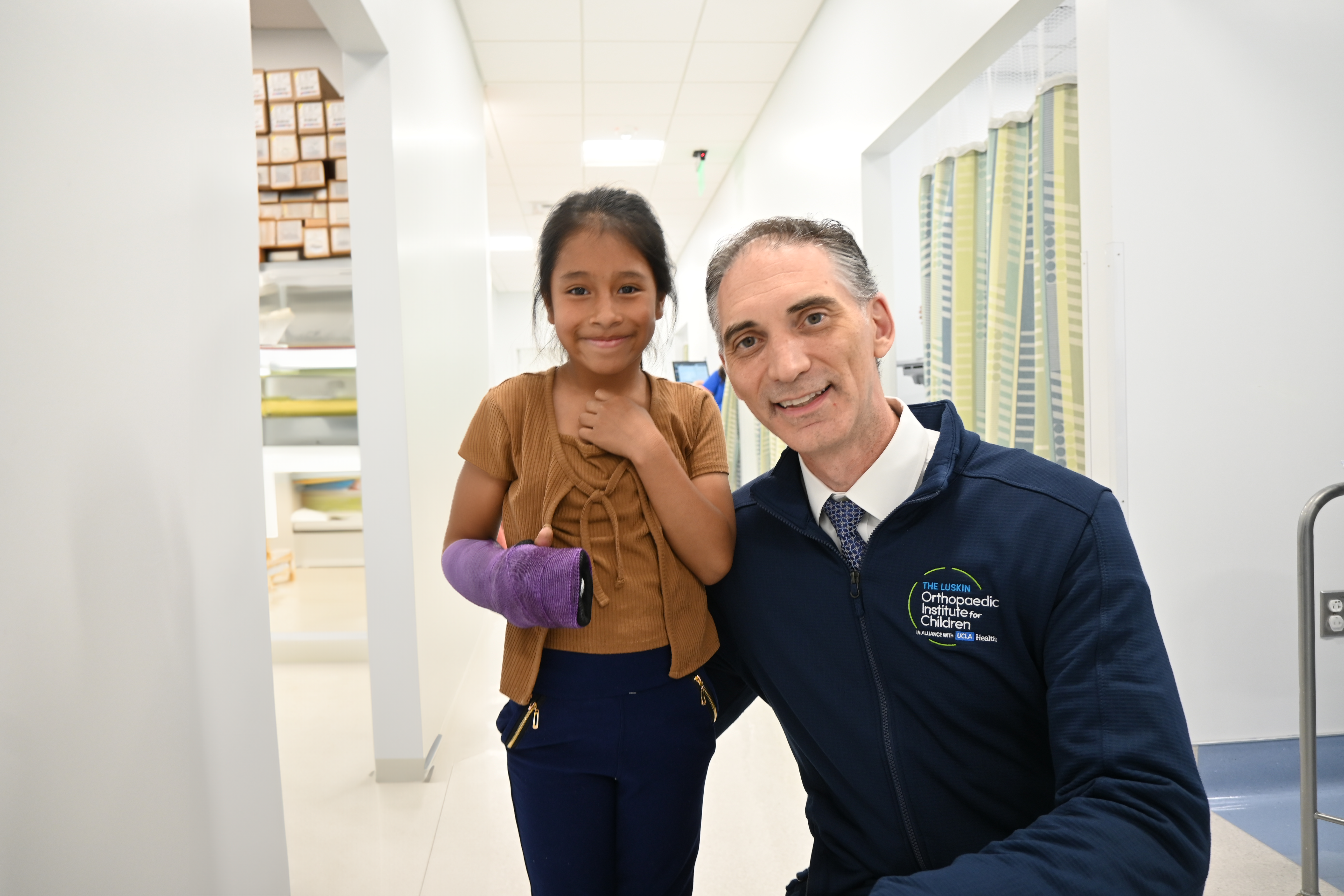HAND TRAUMA
If you suspect your child has had an injury to their hand, they should be seen right away. These types of injuries can affect how well your child can use their hands, and can have a negative impact on their everyday quality of life.
Call for an Appointment 213-742-1000
CONGENITAL DIFFERENCES AND MICROSURGERY
Our expert care treatment includes:
Pediatric hand and wrist injuries (link)
Congenital limb differences (link)
Microsurgical reconstruction of congenital and acquired bone, nerve, muscle and soft tissue deficiencies
Call for an Appointment 213-742-1000

Our Specialized Approach to Hand Trauma in Children
At LuskinOIC, your child will receive hand trauma treatment from award-winning doctors in pediatric orthopedics. Our state-of-the-art technology helps us treat our patients and get them on the path to living full and active lives.
Understanding Hand Trauma in Kids
It’s easy to take the hands and wrists for granted—until one of them isn’t working properly. If your child has a hand injury, the tendons, ligaments, muscles, bones or joints that make up their hands and wrists may stop functioning correctly. If you suspect your child has had an injury to their hand, they should be seen right away. These types of injuries can affect how well your child can use their hands, and can have a negative impact on their everyday quality of life.
Choose a section you would like to review
Overview
Understanding Hand Trauma in Kids
It’s easy to take the hands and wrists for granted—until one of them isn’t working properly. If your child has a hand injury, the tendons, ligaments, muscles, bones or joints that make up their hands and wrists may stop functioning correctly. If you suspect your child has had an injury to their hand, they should be seen right away. These types of injuries can affect how well your child can use their hands, and can have a negative impact on their everyday quality of life.
Types
Types of Hand Trauma in Kids
There are several types of hand injuries your child may experience. Some are from traumas—single events like a car accident or a fall. Other injuries develop over time, from overuse or repeated injuries that weaken the parts of the hand. These injuries may include:
Fingertip / Wrist Injuries: Fingertip and wrist injuries in children can range from minor cuts and bruises to more severe fractures or dislocations, depending on the force and mechanism of the injury. Prompt evaluation by a healthcare professional is essential to assess the extent of the injury and determine the appropriate treatment plan, which may include splinting, casting, or surgical intervention in severe cases.
Broken Fingers: Pediatric broken fingers are frequently caused by accidental trauma during play, sports activities, or falls. Symptoms of a broken finger in children may include pain, swelling, deformity, and difficulty moving the affected finger. A fracture should be diagnosed through physical examination and imaging tests, such as X-rays.
Broken Wrist / Forearm: Symptoms of a broken wrist or forearm in children include pain, swelling, deformity, and difficulty moving the affected limb. Immediate medical evaluation and an imaging test is crucial to assess the extent of the fracture to determine the appropriate course of treatment, which may involve casting, splinting, or surgery to realign the bones.
Cuts to Finger or Hand (Tendon / Nerve Injuries): When a child suffers from cuts to the fingers or hands, it can result in tendon or nerve injuries, posing significant concerns for long-term function. Symptoms of a nerve injury include difficulty moving the finger or hand, numbness, or tingling sensations. Tendon damage may result in impaired grip strength or the inability to fully extend the finger or hand. Urgent medical attention is crucial to assess the severity of the injury and determine the appropriate treatment plan, which may include surgery for severe tendon or nerve injuries.
Signs & Symptoms
Common Symptoms of Hand Trauma in Children
Symptoms can vary from injury to injury, and child to child. The most common include:
Pain when bending or flexing fingers
Swelling and inflammation
Stiffening or inability to outstretch hand
Decreased flexibility
Inability to move the hand or wrist
Deformities
Unable to perform small hand movements without pain, such as using a pen or pencil
Depending on the type of injury, symptoms may come on right away, or develop gradually.
Diagnosis
Diagnosing Hand Trauma in Children
A diagnosis begins with a physical exam where our orthopedic doctors will look at the injury and perform small tests like pushing lightly on the area. Our doctors may then order imaging tests like X-rays or computed tomography (CT) scans to get a better understanding of the injury. If there is a lot of swelling, your child may give a fluid sample to make sure there isn’t an infection.
Treatment
Treatment for Children with Hand Trauma
The hand trauma experts at LuskinOIC can provide several types of treatment, depending on your child’s specific needs. Types of treatment may include:
A splint to keep the hand or wrist in place
Strengthening or stretching exercises
Therapeutic massage techniques, specifically designed for hand trauma recovery
Prescription medications to treat pain, reduce swelling or help with other symptoms your child may be experiencing
Surgery may be required in instances of a hand or wrist fracture
Surgery for children with hand trauma should be done by a highly skilled pediatric orthopedic hand doctor, who is experienced in surgical repairing the many tiny bones in the hand and wrist.
OUR HAND TRAUMA IN CHILDREN EXPERTS

Plan Your Visit
From bringing the right paperwork to driving directions, find out what you need to know for your visit.

